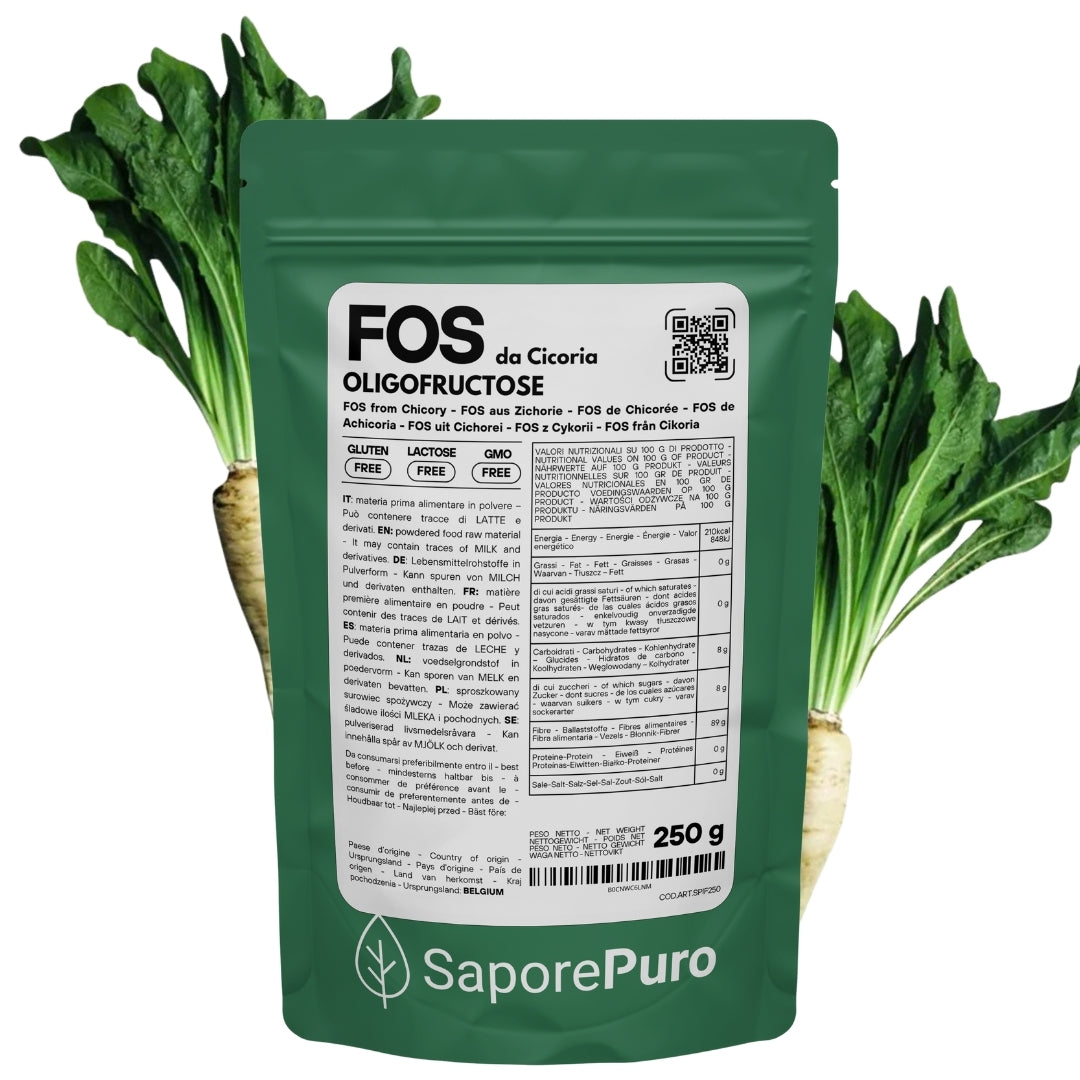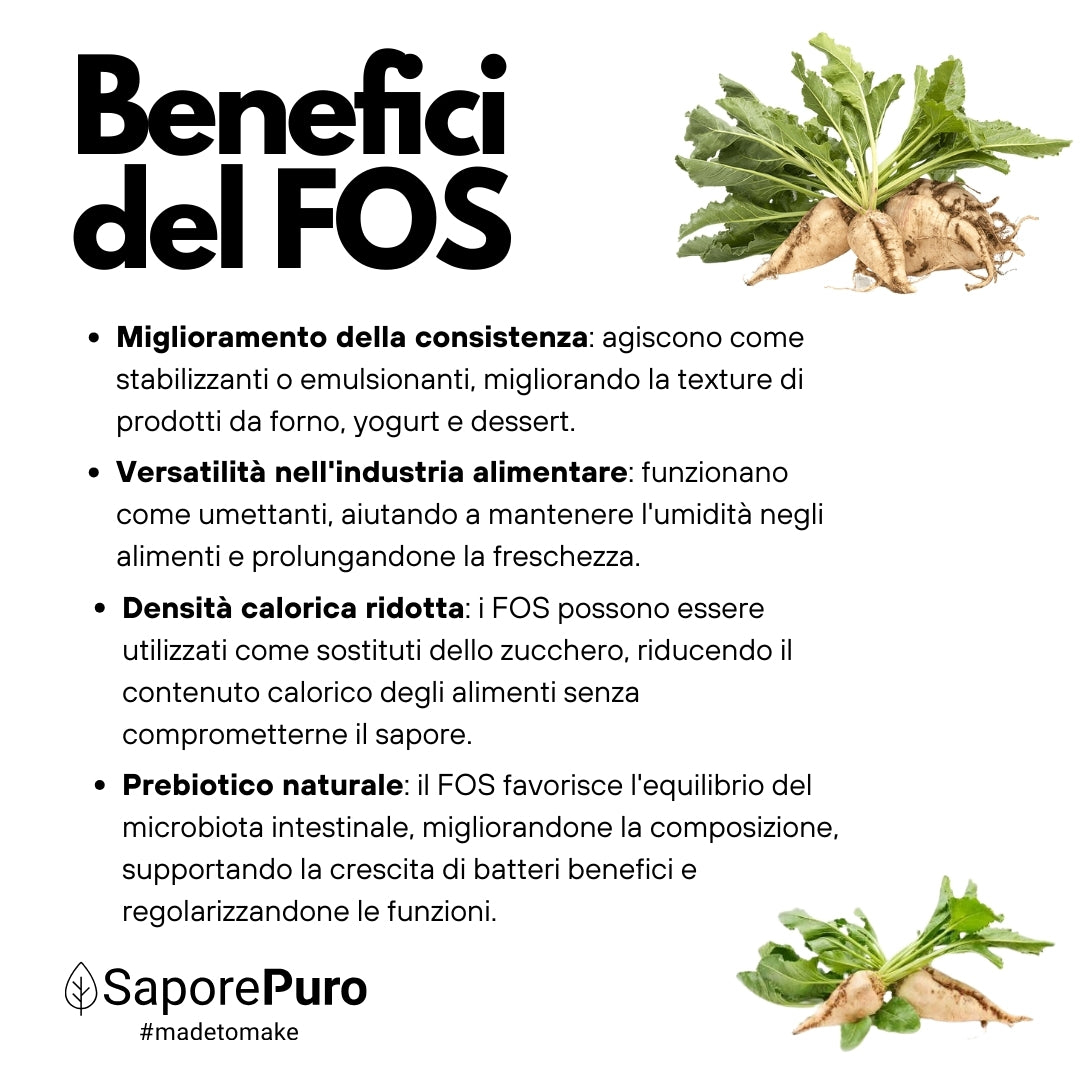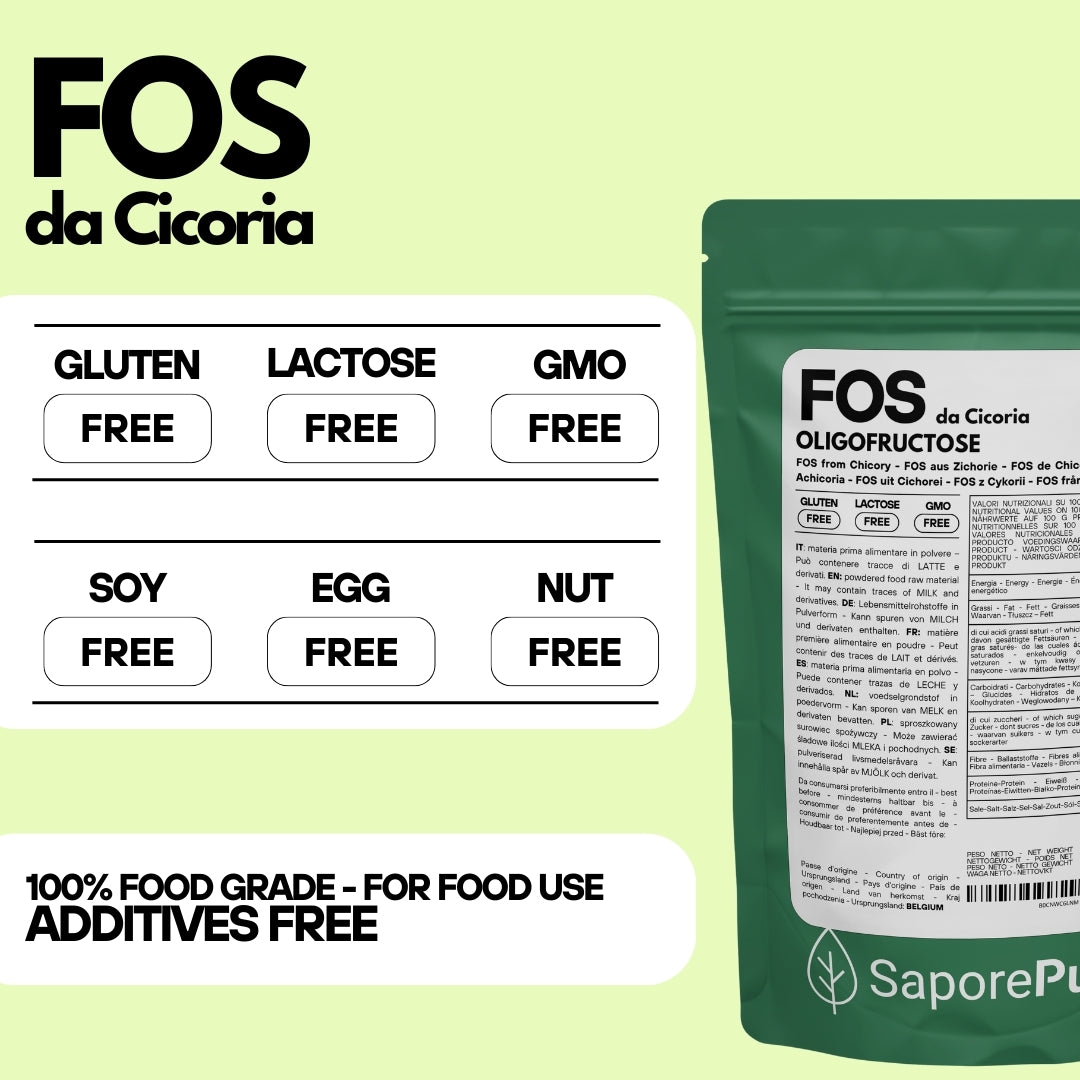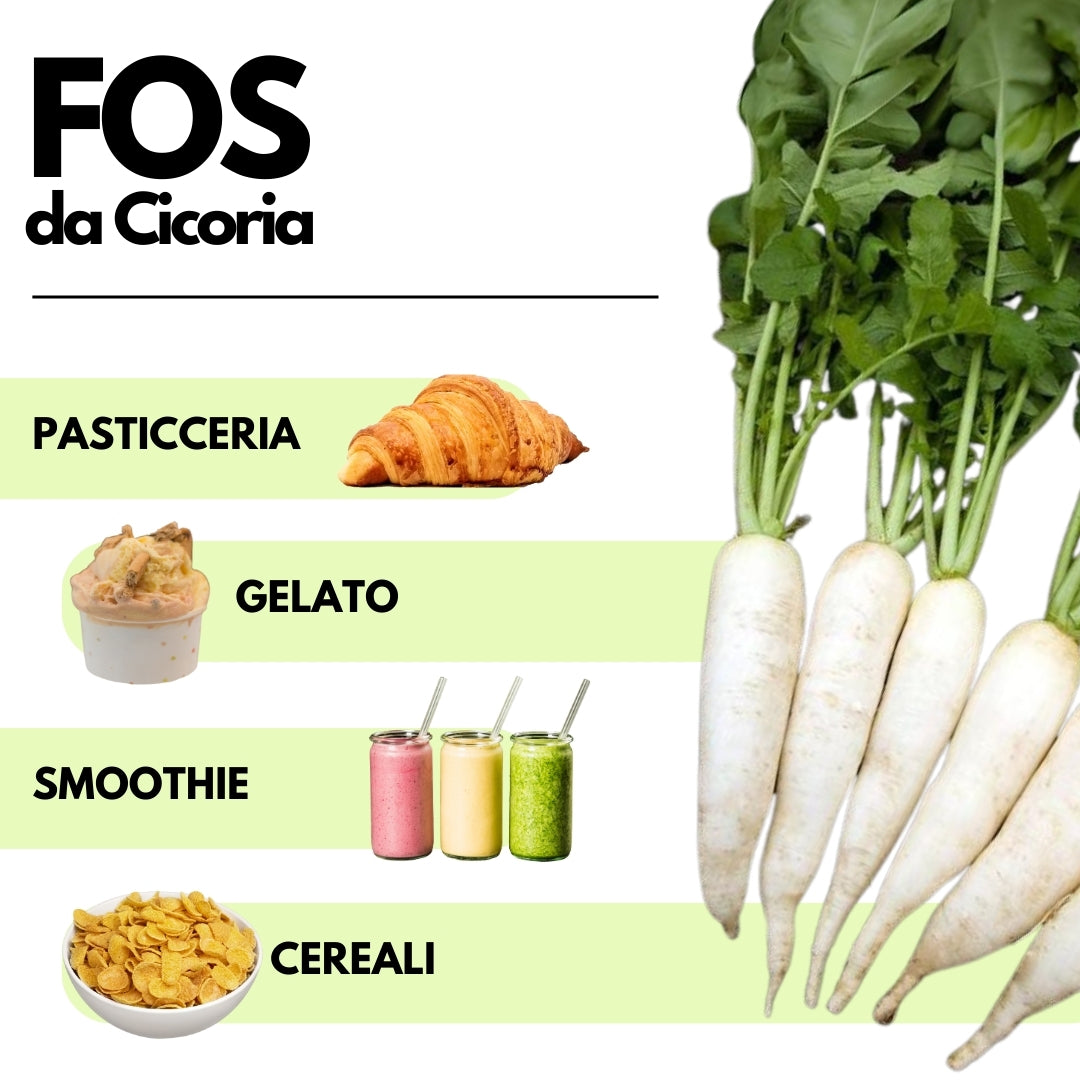SKU:SPF250
Oligofruttosio: il sostituto dello zucchero naturale al 100% - FOS - Frutto Oligo Saccaridi - Origine Europa
Oligofruttosio: il sostituto dello zucchero naturale al 100% - FOS - Frutto Oligo Saccaridi - Origine Europa
Share
Affrettati, rimangono solo 8 pezzi
Impossibile caricare disponibilità ritiro
| Product Details | |
|---|---|
Origin of raw material |
BELGIO
|
Food Needs |
Senza OGM, Senza glutine e Senza lattosio
|
Data Sheet |
|
Fields of use |
Prodotti Lattiero Caseari, Drinks e Bevande e Pasticceria
|
🌿 Oligofruttosio SaporePuro
L’Oligofruttosio SaporePuro è una fibra alimentare solubile e un dolcificante naturale derivato dalla radice di cicoria tramite idrolisi enzimatica parziale dell’inulina. Questo processo, che avviene naturalmente nelle radici a fine raccolto, rende l’oligofruttosio un ingrediente di origine vegetale al 100%, con un profilo tecnico e nutrizionale unico.
Dopo l’idrolisi, il prodotto viene purificato per soddisfare i più elevati standard qualitativi, anche per l’alimentazione infantile. Grazie alla sua versatilità e alla dolcezza naturale, l’oligofruttosio è oggi uno degli ingredienti più apprezzati nel settore alimentare e salutistico.
⚙️ Caratteristiche e utilizzi
L’oligofruttosio è apprezzato per il suo basso indice glicemico, il contenuto calorico ridotto e la capacità di comportarsi sia come dolcificante che come fibra prebiotica. Con un potere dolcificante pari a circa il 30% del saccarosio, rappresenta un sostituto ideale dello zucchero, capace di migliorare gusto, texture e valore nutrizionale delle preparazioni.
-
In yogurt aumenta cremosità e consistenza, arricchendo la ricetta di fibre prebiotiche e potenziando l’effetto dei fermenti probiotici.
-
Negli snack dolcifica in modo naturale, riducendo le calorie e migliorando il profilo nutrizionale.
-
Nelle bevande si scioglie facilmente, sostituendo gli zuccheri tradizionali in succhi, bibite light ed energy drink.
-
Nei prodotti da forno migliora la struttura degli impasti, preserva la morbidezza e aumenta il contenuto di fibre.
-
Negli alimenti per esigenze dietetiche speciali (per diabetici o diete a basso contenuto calorico) garantisce dolcezza naturale senza aumentare i livelli di zucchero nel sangue.
✨ Benefici nutrizionali
L’Oligofruttosio SaporePuro agisce come prebiotico, poiché non viene digerito nello stomaco o nell’intestino tenue e raggiunge intatto l’intestino crasso, dove diventa nutrimento per i batteri benefici. Questo contribuisce a:
-
Migliorare l’equilibrio della flora intestinale.
-
Supportare la gestione del peso grazie al minor apporto calorico.
-
Favorire il controllo della glicemia, evitando picchi glicemici.
Il suo gusto leggermente dolce e la sua facile lavorabilità lo rendono ideale anche in combinazione con dolcificanti ad alta intensità, per un risultato più vicino al sapore dello zucchero.
📌 Specifiche tecniche
-
Aspetto: polvere solubile di colore chiaro
-
Potere dolcificante: ~30% rispetto al saccarosio
-
Conservazione: in luogo fresco e asciutto (< 25°C, UR < 60%), stabile fino a 60 mesi
-
Allergeni: non contiene allergeni, può contenere tracce di latte
-
Senza glutine: conforme Reg. CE 828/2014 (≤ 20 mg/kg)
🌱 Curiosità
Oltre a sostituire lo zucchero con un profilo più leggero e salutare, l’oligofruttosio è considerato la migliore fibra alimentare solubile, poiché può essere facilmente inserito nei processi produttivi senza modifiche significative. È impiegato, ad esempio, negli sciroppi leganti per cereali e nei preparati a base lattiero-casearia, garantendo qualità costante e benefici nutrizionali.







-
Delivery Guarantee
All orders are processed in 24/48h and delivered by your preferred courier service.
Whatsapp and Email notifications with tracking. -
Secure Payments
Multiple payment options available. Your details are securely encrypted within the latest technologies.
-
Certified Quality
All SaporePuro ingredients are certified according to EU regulations. We guarantee only the highest quality and certified origins.
-
Assistenza Rapida
Non vi lasciamo mai soli. Il nostro team di assistenza clienti è disponibile7 giorni su 7 per garantirti un'esperienza d'acquisto senza intoppi.

Ingredienti professionali, consegne rapide, zero pensieri.
SaporePuro è lo shop online per professionisti e casalinghi: centinaia di ingredienti tecnici, spedizioni veloci e supporto dedicato.












